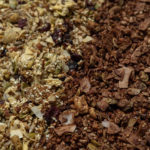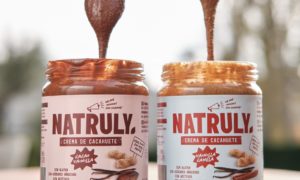Estimated reading time: 2 minute(s)
Pseudograins are foods that biologically resemble cereals but that belong to another plant family. Their nutritional value is higher than that of traditional cereals.
Biologically, wheat, corn, rice, rye, millet, and spelt come from monocotyledonous plants – those with a single leaf or cotyledon – while pseudograins such as quinoa, buckwheat, amaranth, and chia are seeds that come from dicotyledonous plants – with two or more cotyledons –
What you need to know about the main Pseudograins:
- Quinoa has existed since the Inca empire and is very high in nutrients because it contains all the essential amino acids, in addition to potassium, folic acid, and vitamin E.
- Chia has become very famous for its high nutritional content. It’s rich in fiber, protein and Omega 3 fatty acids. It comes from a plant that grows in Central America and should never be eaten dry because it grows to 27 times its size in water and can clog the esophagus.
- Buckwheat has been around since before Christ. Its name suggests that it is from the same family that wheat belongs to, but the truth is that it comes from the same group of plants that produce rhubarb – a plant that comes from northeastern Europe where only the stem can be eaten. It has quality protein and nutrients like magnesium and potassium.
- Amaranth is a powerful plant-based food. Just one tablespoon, with around 4,000 seeds, is rich in quality protein, contains high levels of iron, phosphorus, magnesium, and folic acid. Bonus: it’s also gluten-free.
Some of their main features:
- Pseudograins are superior to other cereals when we compare their nutritional value with that of common cereals as they are higher in protein, minerals, and vitamins. Some of them are complete plant-based protein sources, such as quinoa.
- Their crops haven’t been genetically modified unlike what happens with other legumes or cereals. Meaning that they cannot be refined – like wheat – thus they don’t lose their nutritional value like whole-grain wheat.
- Although its seeds are gluten-free, they contain carbohydrate-binding proteins called lectins and molecules such as saponins that can be toxic to the body, causing inflammation and preventing good digestion. They can also prevent nutrients from being properly absorbed if eaten raw. How these foods are prepared is key. Soaking, fermentation, and germination almost completely eliminate the anti-nutrients contained in the raw seed. Therefore, it is completely safe to consume them when prepared properly.
In short…
A Paleo diet doesn’t include cereals, grains, or legumes nor pseudo-grains. However, that is only if you plan to follow the diet to a T. If you’re flexible and only eat pseudo-grains from time to time because your body can handle them then, they can be beneficial to your body while also making for good alternatives to dishes that traditionally call for rice or bread.
Not being able to eat carbohydrates can be difficult at first, especially when they have always been a part of our meals. This is where pseudo-grains come in, to replace cereals that are the base for many dishes that have no place in the natural diet.
Creating healthy dishes that mimic those typically eaten has become culinary art. This is why other substitutes such as coconut flour, almond flour, cauliflower rice, and even cauliflower pizza dough are also becoming so trendy.
We believe that there are more nutritional benefits contained in these foods than anti-nutrients. The secret is in how they are prepared!
What are your thoughts on pseudo-grains? Have you tried them? Did you like them?











